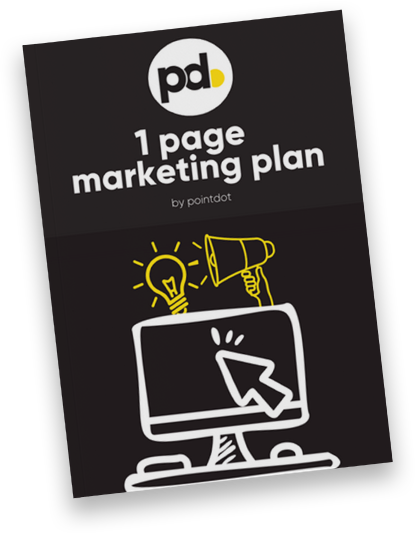
A Guide To Using Content Pillars In Your Social Media Strategy
Social media marketing can be a challenging task, especially if you tend to create content on the fly. The creation of meaningful social media content requires planning, ideation, and execution. This won’t be possible without a very important marketing tool: content pillars.
Whether you manage the social media page of a corporate titan or a small start-up brand, you need content pillars. In this article, we’ll go over what content pillars are, why they’re important, and how to create content pillars that make sense for your content strategy.

What Are Content Pillars?
In social media marketing, the term “content pillars” refers to a set of themes that your brand will use to conceptualise and create content for social media posts. Think of it as a guideline or framework to realise your digital marketing objectives.
In the digital marketing industry, content pillars are also sometimes called “content buckets”. This is likely because social media content pillars are relatively broad categories that you can “fill” with various types of content.
For example, you can have a content pillar that focuses solely on customer service. There are many things you can cover under this particular pillar or bucket, but it will all tie back to the main topic.
Each content pillar has a purpose, theme, and direction that helps you move toward your business goals. Thus, when creating your content pillar strategy, you’ll need to consider your brand, target audience, their needs and pain points, as well as the latest trends in social media post formats.
Why Are Content Pillars Important For Social Media?
A comprehensive and successful content marketing strategy always includes social media content pillars. Social media users expect a certain degree of consistency when it comes to your page. Without a content strategy and set pillars to guide you, you will likely end up creating content that your audience doesn’t find relevant or engaging.
Content pillars give your social media strategy structure and substance as well as aid in organising your editorial calendar. Before creating your actual executions, plot what a full month of content looks like based on your different content pillars. This makes the process of planning and ideation much more streamlined.
Additionally, and perhaps most importantly, each content pillar gives your brand and products a stronger sense of coherence. By carefully curating what you say and show to your target audience, you are further establishing a stronger brand identity through content pillars.

How To Develop Your Own Content Pillars
If you search “content pillars template” on Google, you’ll find quite a few different iterations of this social media strategy tool. That said, it’s important to know that there is no one-size-fits-all template for content pillars.
While it’s helpful to look at content pillars examples, these are designed as a starting point. You still have to tweak it in a way that best fits your brand. This ensures that each content pillar you create is backed by a strong understanding of your brand, audience, and what you want to achieve.
Understand Your Target Audience Expectations And Pain Points
To create content pillars, the first step is to understand your target audience. Audience personas are a helpful tool in achieving this.
Visualise your ideal customer as a living and breathing manifestation of your target audience. To help you get a better understanding of what kind of person they are, here are some samples of questions you can ask yourself:
- What expectations do they have for your product?
- What factors do they consider when choosing a brand in your industry?
- What social media platforms do they use?
- What trending topics online do they tend to gravitate towards?
It’s also worth looking into whether you have more than one target audience segment. If you do, we recommend that you create additional personas for each. This ensures your content pillars cover all your customer bases – not just the most obvious ones.
For example, if you have a subscription-based product, you may want to create separate personas for potential and existing customers. Each of these groups will have similarities and overlaps, but they may also have fundamental differences in expectations and behaviour, which you’ll need to address when creating content pillars.
Check What Your Competitors Are Doing
If you want to be competitive in social media marketing, you have to understand how your direct competitors work. Your brand doesn’t exist in a vacuum – potential customers are constantly comparing your brand to others. Thus, you can get some inspiration for your own content buckets by looking at what your competitors are doing.
A great exercise is to map out what you believe their content pillars look like by following these steps:
- Identify who your direct competitors are.
- Visit their social media pages.
- Look at all of their content from the past month or two.
- Write down any common themes you see across the posts.
- Group similar posts and assign them to a content pillar.
Through this process, you’ll learn what types of content your shared customer base responds well to. You’ll also be able to identify whether your competitor has any blind spots, such as failing to cover certain facets of their products or services. Use this as an opportunity to get a leg up on your competitor by including it in your content pillars.

Refine Your Key Messaging
Once you’ve clearly defined your target audience personas and studied your competitors, you’ll have a much easier time crafting your key messaging. Your key messaging should cut across each content pillar you create to ensure consistency across all your social media platforms and posts.
Below are some general questions you can ask yourself to help you identify your key messaging:
- What customer pain points do your products or services solve?
- What makes you distinct from your competitors? Why would customers choose you over others?
Keep in mind that there may be more specific questions that you need to ask depending on your industry.
Content Pillar Examples
By this point, you should already have your audience personas, a competitor analysis, and a set key messaging. Now what?
It’s one thing to analyse information, but it’s a whole other thing entirely to create social media content pillars – you need to be strategic yet also creative. To make this easier to understand, here’s an example of how content pillars can be created using a fictional brand:
- The brand: You run a craft brewery that specialises in a lesser-known type of sour beer called lambic. Your brewers were trained in Belgium where lambic originated. You have a brick-and-mortar store, but you also have an e-commerce website and do home deliveries.
- Your audience: Your audience has generally never heard of, much less tried, lambic, but they love discovering new types of beer. They enjoy going to restaurants with unconventional menus and are likely to take photos of their meals and post them on social media.
- Your competitors: Your direct competitors only make your typical lagers and IPAs. Their social media posts typically comprise static images of promo deals for their taprooms. They don’t do home delivery.
- Your key messaging: You are the only brewery that offers lambic in the city and also the only one that does home delivery.
There are many ways you can strategise your pillars based on this information. Below is just one example of how to do this:
- Product features: These are posts that highlight aspects of the beer. For example, an Instagram story that breaks down each flavour profile of your beer in detail would fall under the product feature bucket.
- Food pairing: These are posts that recommend certain dishes to pair with your beer. For example, a static image explaining why lambic and ceviche go together would fall under the food pairing pillar.
- Credentials: These are posts that show off your expertise and experience. For example, a 20-second video of one of your Belgian-trained brewers explaining what constitutes an authentic lambic beer would fall under the credentials category.
- Trivia: These are posts that talk about the history and process of lambic relative to other types of beer. For example, a simple static infographic explaining the difference between a lambic and a lager would fall under the trivia bucket.
- Delivery: These are posts that highlight your e-commerce website and home delivery services. For example, a Facebook story that covers your quick delivery time would fall under the delivery content pillar.
There is no limit to how many pillars you can create. A good rule of thumb is to have at least three. That said, we recommend that you keep them as simple and concise as possible. Too many pillars can cloud your messaging and make filling your content calendar a much more convoluted process than it has to be.
Final Thoughts
Content pillars are an invaluable tool for social media marketers. Having thoroughly researched pillars is fundamental to the success of your brand’s social media strategy.
Content pillars are not just for the benefit of your target audiences on social media – they also make your job as social media manager easier. Content pillars breathe structure and order into your content ideas. Once you have them, creating your content calendar will feel like a walk in the park.

1 page marketing plan.
Since 2016, pointdot has grown by adopting the same marketing principles in this 1-page plan, into our own agency and business. We have grown from a 2-person team, to a team of 11 super talented marketers. Download your free copy of this brilliant 1-page marketing plan and begin growing your business!

